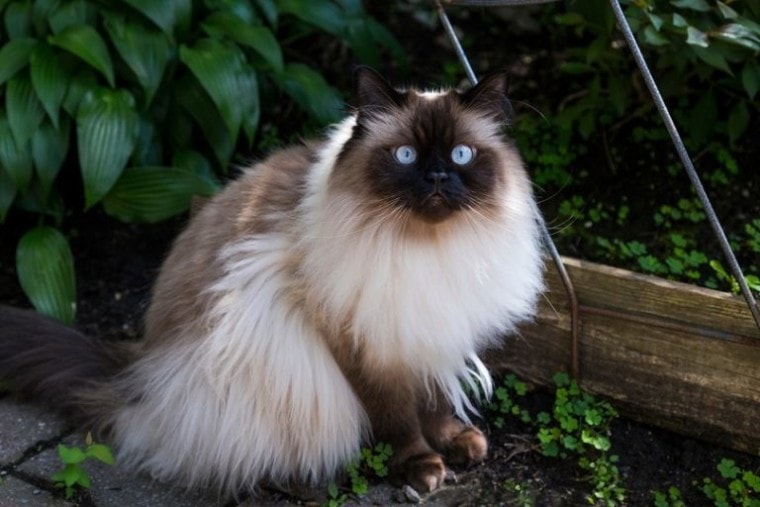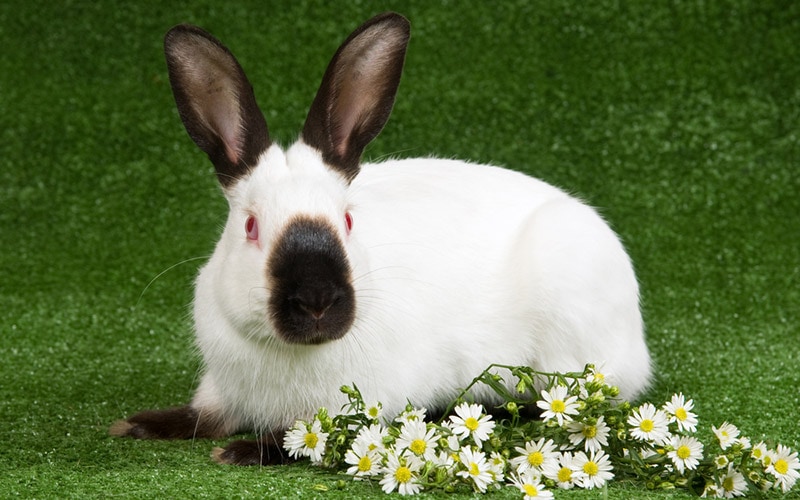
Himalayan cats are charming cats that are known for their pleasant, loving temperament. They are intelligent cats that love to spend time with their people, but they are independent enough to be content when left alone. They have cute, gentle faces, and they can be both quiet and relaxed and wild and crazy, and their activity level often matches the situation. Make sure to provide them with lots of love and playtime, and you’ll have a happy Himalayan. Here are some of the most interesting facts about Himalayan cats.
The 9 Facts About Himalayan Cats
1. They Are Similar to Persian and Siamese Cats

The Himalayan cat is sometimes referred to as a Persian in a Siamese costume, and for good reason. Himalayans are very similar in build and overall appearance to Persian cats, but they have beautiful blue eyes that help differentiate them.
The Siamese part of their appearance comes in with their colorpoint markings that mimic those of Siamese cats. They can come in a variety of pointed markings, just like the Siamese breed.
2. Their Origins Are a Mystery
It’s generally believed that Himalayan cats originated at Harvard University in the 1930s. It was during this time that Clyde Keeler and Virginia Cobb began a study that involved crossing Persian and Siamese cat traits.
The original cat from this study that had the characteristics they wanted was named “Newton’s Debutante”. In the 1950s, early Himalayans really took off, becoming more popular. There are some people, though, who claim that the earliest origins of Himalayans are with the Pallas Cat—a small wildcat from Asia.
3. Himalayans Are Named After Rabbits
The Himalayan name didn’t come from the Himalayas, even though it certainly sounds that way. The first person to refer to the breed under this name was Margaret Goforth, an American breeder. She chose this name because the look and markings of the new breed were very similar in appearance to those of Himalayan rabbits, and the name for the cats stuck.

4. There Are Two Face Shapes
There are two face shapes that are accepted within the Himalayan breed. The traditional face shape is also referred to as a doll face. It is round and gentle, and it features a longer snout that sits lower on the face than extreme Himalayans.
Extreme Himalayans, also sometimes referred to as peke-face, have a face that is similar to that of a Pug or Pekingese. The nose sits higher on the face, but the face overall is flatter, giving an appearance similar to the aforementioned dog breeds.
5. They Can Be Big Talkers
Image Credit: MULTI ILHAM ANUGRIYA, ShutterstockIt’s not uncommon to hear Himalayans talk a lot, especially if they’re hoping for attention from you. The meow of the Himalayan cat is often referred to as having a “melodious” sound and tone. That means that it might be a little obnoxious for your cat to talk to you a lot, but the sound coming from your Himalayan will likely melt your heart enough to convince you to give them the attention they crave.
6. They’re Good With Kids
The Himalayan breed is known for its love of children, but there are limits to this. They enjoy spending time with gentle children, and some will tolerate being walked or pushed around in a kitty stroller.
However, Himalayans are too timid for loud noises, so they may disappear when the rambunctious children make their appearance. They also do not like roughhousing and will avoid being handled roughly, so don’t expect them to stick around with children who don’t properly handle cats.
7. They Have High Maintenance Coats
While Himalayans are longhaired cats, they are typically only considered to be moderate shedders. They have a double coat that requires very regular care to keep healthy and free of matting, though.
Himalayans need to be brushed multiple times every week to remove tangles and prevent mats, along with removing loose hair. It’s often recommended to bathe your Himalayan once every month or so to remove excess oil buildup from the coat.

8. They Were Accepted as a Recognized Breed in the 1950s
Even though the breed was in early development starting at least in the 1930s, it wasn’t until the mid-1950s that the breed was recognized by the American Cat Fanciers’ Association. The first champion of the Himalayan breed was a cat belonging to Margaret Goforth by the name of LaChiquita. It wasn’t until the 1960s that the Himalayan breed was recognized by all breed and cat clubs in the United States.
9. They Are Strong
Himalayans may look chubby because of their fluffy coat, but they are actually stocky, muscular cats. They can weigh up to 12 pounds, so they are not small cats. Their muscular bodies do require regular activity to maintain healthy muscle mass and prevent obesity.
High-quality cat food and regular exercise and play will help keep your Himalayan healthy. It’s important to stimulate activity with these cats. While they do like to play, some of them are a little bit lazy without being enticed by fun games and toys.

Summary
The Himalayan is a fabulous cat breed that is loved by many people, and for good reason. They are loving cats with a loving and fun temperament. They may meow at you for attention, but they’ll play fun games with you if you encourage your Himalayan to stay active. They are strong, muscular, athletic cats that can live long, healthy lives with proper care and nutrition.
Featured Image Credit: Anne Richard, Shutterstock






